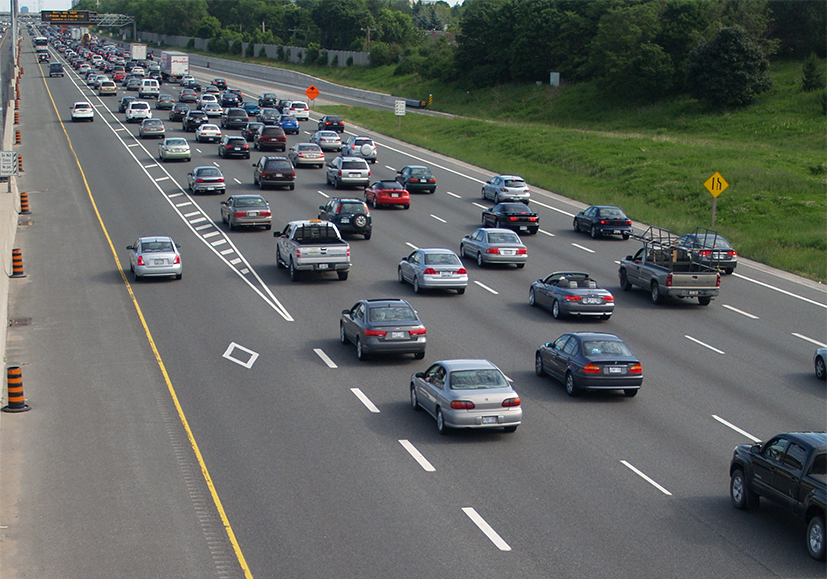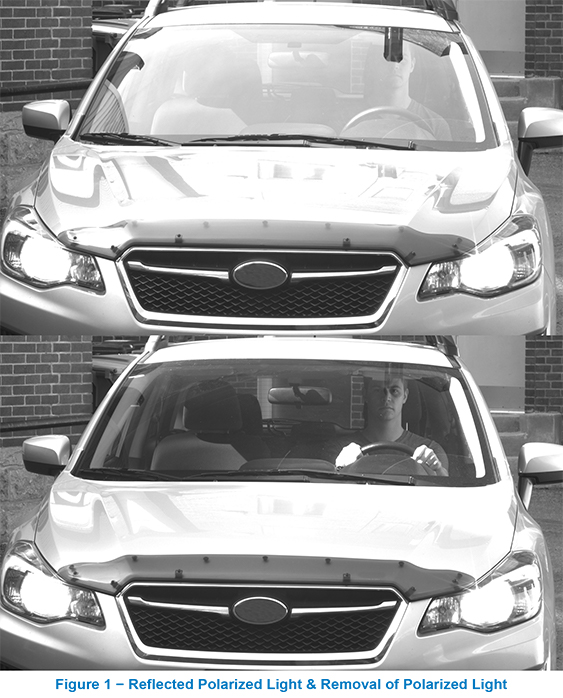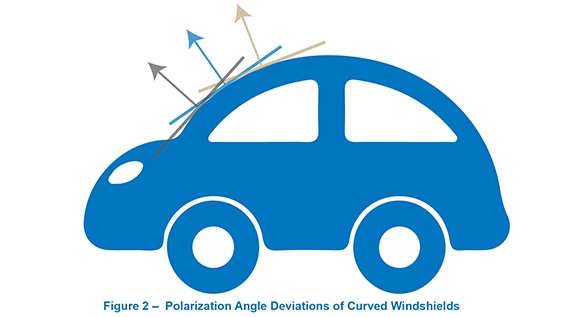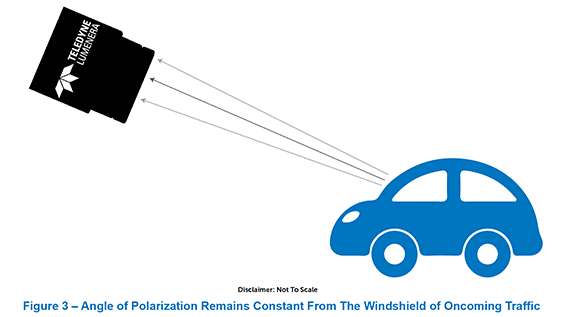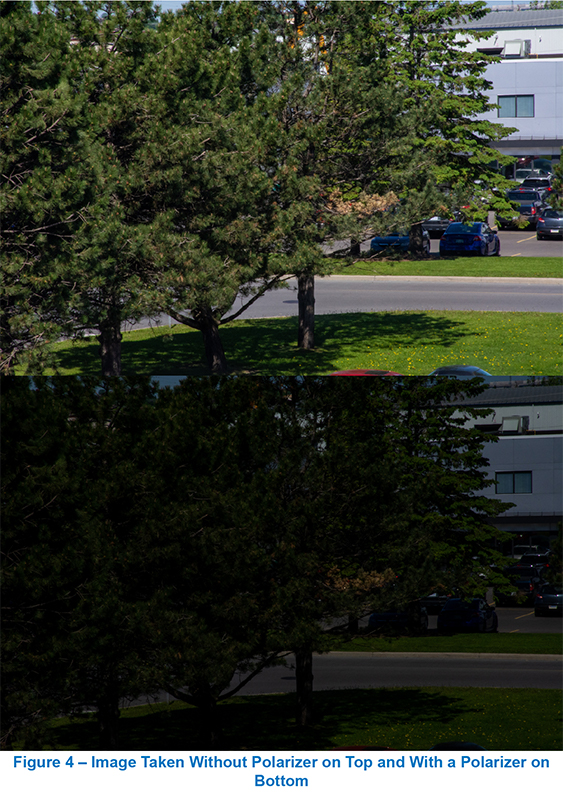The imaging challenge of HOT lane enforcement
High occupancy traffic (HOT) lane enforcement systems face challenges that go beyond those of typical intelligent traffic systems (ITS) that try to capture license plate images. They are required to capture not only images of the passing vehicles and license plates, but to also view and record the number of occupants within a vehicle to determine if they meet the minimum number of passengers.
Capturing images of people behind glass is challenging even under ideal conditions. Stepping outside where lighting conditions can change at a moment’s notice makes things even more difficult. The most challenging aspect when trying to image through glass is the reflection from the glass itself. In a controlled environment, positioning a light source(s) at certain angles from glass allows light to transmit through the glass and onto a subject while minimizing reflections. However, with an outdoor installation there are usually limitations for camera placement. In addition, there is no control over the ambient lighting.
Polarizer Filters – A useful tool in outdoor imaging
Light produced from the sun is inherently unpolarized, so the emitted light has no particular orientation. However, when light strikes a non-metallic surface, its reflection becomes largely polarized. This is especially true for glass.
Since most reflections produced by glass are largely polarized, a polarizer filter can be used to selectively remove the reflection from the glass while keeping the necessary visual information produced by unpolarized light (e.g. imaging occupants in a vehicle).
Figure 1 shows how a polarizer filter is able to remove the glare that obscures a view of the car’s interior. The top image is letting all the polarized light reflected off the windshield through to the image sensor, making it difficult to see inside the vehicle. The bottom image has the polarizer filter rotated 90° to block out the reflected polarized light, allowing a clear visual of the driver and resulting in an image that shows no other occupants are present in the vehicle.
When using polarizer filters for HOT lane enforcement, the filter and camera orientation should be set only once and locked down to maintain their position. All polarized light due to reflection is oriented parallel to the surface plane from which it was reflected. Due to the curvature of a windshield the angle of polarization will have a larger deviation around the edges of the glass, as shown in Figure 2 where the variation in angles are shown with arrows corresponding to the curvature of the windshield. However, these deviations are minor and still result in a reduction in reflection allowing for a fixed polarizer to see through any oncoming traffic.
Since the orientation and direction of travel of vehicles remains constant with respect to the camera, all polarized reflections will have consistent orientation when passing by the camera, as shown in Figure 3. In this image the slightly lighter arrows represent minor deviations in the angle of polarization and the center arrow represents the polarized light that exactly matches the filter’s orientation. For further reading on polarized light and other lighting theory, take a look at the "Using Lighting to Optimize Camera Performance" white paper.
More light or more sensitivity
One drawback that polarizer filters introduce into the imaging system is the requirement for either more light or a more sensitive camera. Since the filter removes all wavelengths that align with the angle of polarization for the filter, the sum of all the components that pass through the filter totals 50% of the incident light. This equates to reducing one full f-stop of a lens’ aperture, which is the same as cutting the exposure / gain for the camera in half, as shown in Figure 4. In this image the difference in exposure can be seen with the image being taken without a polarizer on the top and the polarizer reducing the light in the bottom portion of the image.
Conclusion
The benefits of using a polarizer filter for HOT lane enforcement can be significant, but is not without drawbacks. The use of carefully placed lighting can help illuminate a scene so it can compensate for the reduction in light due to a polarizer. For further information on polarizer filters, filter theory, and other practical uses of filters, please review the white paper, "Maximizing Camera Performance with Filters."
For more information on using polarizer filters with cameras for Intelligent Traffic System (ITS) applications, please contact Teledyne Lumenera’s imaging experts. They can also help with selecting the cameras to best meet your requirements. Reach out at [email protected].
And, sign up for our newsletter to automatically receive regular updates from Teledyne Lumenera.

